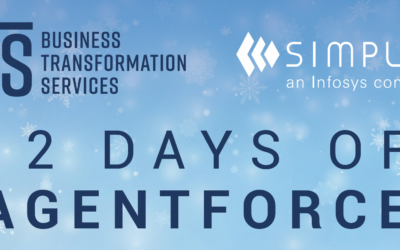It’s no secret that the time for transformation was yesterday, but manufacturing is to many the final frontier for comprehensive digitization to take hold of. In fact, 36 percent of manufacturing CIOs at companies that have been disrupted say that operating cost competitiveness has fallen behind, and these same companies realize above-average value from IT spending in digitization initiatives. But still, decision-makers in the IT departments of many manufacturing organizations often struggle to get their colleagues fully on board and their objectives in motion for widespread adoption.
To combat this, CIOs of manufacturing organizations today need top talent using proven technology to push innovation. But achieving such ambitious objectives is always easier said than done. What specific barriers are standing in the way of accomplishing transformative efforts in the manufacturing space? Based on research from Gartner, Forrester, and others, we’ve taken a deep dive into the three biggest areas of concern: integration, organizational complexity, and legacy processes. Let’s discover what these challenges look like in manufacturing companies today and potential solutions to remove the obstacles with an industry-focused approach.
Integration
The first major barrier to CIOs achieving their biggest goals is just the sheer complexity of systems they have to organize at enterprise manufacturers. There is a wide range of technologies smart manufacturers use to gather, analyze, and act on customer data, from CRM and ERP to IoT machines, AR, and robotics. But making sure the right platforms and technologies are not only on the table but are also properly synced for data sharing and collaboration is not a small task. That’s why many manufacturers call upon technology partners to assist with data integration with a high-level, comprehensive approach. Having the proper integrations set up and configured according to your interdepartmental needs not only saves IT resources loads of troubleshooting time, but also maximizes company profit margins and decreases the risk of missing out on potential market share.
Organizational complexity
Another critical challenge standing in the way of manufacturing CIOs’ success is organizational complexity. In manufacturing, this buzzword can mean a variety of things, but it most commonly refers to the internal factors that make changes to business processes tough to seamlessly adopt: product portfolio variety, a wide range of customer targets, extensive supply chain and product development processes, and unpredictable resource management logistics. These are just some of the internal complexity drivers in manufacturing. Some complexity is natural, good, and simply part of the territory of becoming a larger, profitable company with more customers, more offerings, and more markets to be concerned with. But that doesn’t mean any and all complex processes should be accepted as an unavoidable fate.
Wherever possible, simplicity is advised, particularly in your product catalog, sales automation, and the data needed to run proper customer relationship management. A key way to minimize unnecessary complexity is to break down silos and ensure front and back offices are effectively sharing information and communicating customer data. Simplus works with clients to identify needlessly cumbersome areas of their go-to-market strategy and put customer data in as many hands as possible within the organization, making it easier for everyone to be on the same page at any time. We discuss the idea of dynamic data that flows between front and back offices in more depth in this on-demand webinar.
Legacy processes
Finally, one of the greatest holdups for manufacturing CIOs is a tale as old as time: holding too tightly to the past. Manufacturing organizations tend to resist change more than many industries and take great pride in the overly customized unique workarounds they’ve been building up over time to make old technology fit new needs. But these legacy systems and processes do more to harm than benefit most organizations. Yet it’s going to take more than one executive decision-maker to realize that hard truth to make an entire enterprise adopt new, sleek ways of doing business. Widespread cultural change can free up the future for manufacturers, bringing M4.0 to the forefront and creating a usable environment for transformation initiatives. Infosys’ research on change coaching notes that successful change depends on a few key elements being involved:
—People that accept the opportunities available through change
—People with a willingness to shape the future state
—Change that is implemented consistently and explained plausibly
—Supporting programs, info sessions, and training for the changes
All in all, it comes down to having a strategic and actionable change management plan. This will allow transformation efforts to take off with more acceptance and even excitement from team members on every level and in every department.
The road toward true, value-driving transformation in manufacturing can be a long one for CIOs, but it can be made easier with the right technology partner at your side. Learn more about Simplus’ advisory services for mapping out long-term transformation goals specific to your organization’s needs.















0 Comments